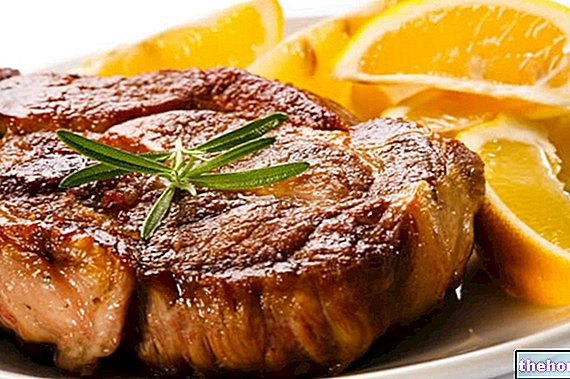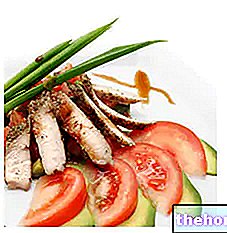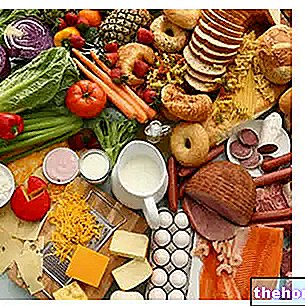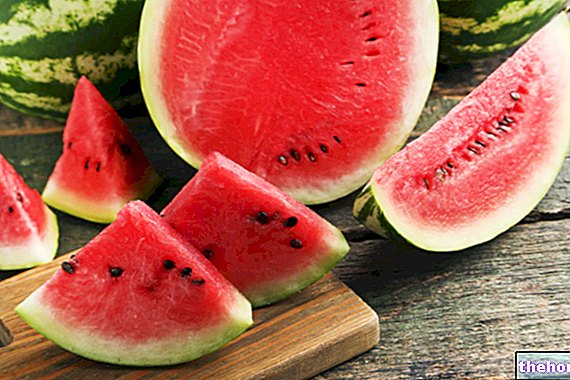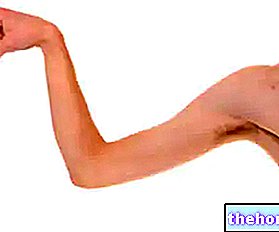Muscle catabolism means the significant, as well as objective and measurable, loss of contractile fiber cells (or their section).

In certain sports practices (based on the various expressions of strength), anabolism overcomes catabolism by increasing muscle mass. On the other hand, in other conditions (pathological or caused by inappropriate conduct) the ability to rebuild muscle tissue after catabolism is not effective or efficient enough.
This last mechanism, if prolonged over time, is responsible for muscle catabolism proper (clinically detectable and impacting on the state of health).
What to do
- First of all it is necessary to understand if it is actually muscle catabolism. As anticipated, to be defined as such, it is necessary that he possesses at least the requirements of:
- Circumference reduction.
- Mass reduction.
- Strength reduction.
- Many sportsmen, or rather many bodybuilders, think they suffer from muscle catabolism; however, it is almost never correct. The reduction of the section and the mass within certain limits, without the loss of strength (especially in sportsmen who train their muscles), excludes the possibility of catabolism. On the contrary, it is most likely a matter of:
- Loss of intramuscular fat mass: due to effective weight loss (cutting or definition).
- Loss of trophism: reduction of glycogen, solutes (creatine phosphate, mineral salts, etc.) and "intracellular water. It is mainly due to:
- Interruption of the activity: when possible, the solution is not to interrupt the workouts and to carry out the so-called maintenance.
- Dehydration: a sportsman should take a quantity of water equal to 1 milliliter per calorie of the diet and add what is lost with the specific activity (variable from subject to subject).
- Malnutrition or unsuitable diet.
- Poor recovery and lack of sleep.
- Excessive aerobic activity.
- Overtraining.
- Cases of “proper” muscle catabolism in athletes are quite rare, but not impossible. Let's summarize the most frequent reasons and the remedy to be taken:
- Generalized malnutrition: it is advisable to follow a normocaloric diet, varied and possibly supported by food supplements.
- Energy deficiency: absolute and mainly referred to carbohydrate deficiency. It occurs mainly in athletes who follow low-carbohydrate diets. It forces the body to break down muscle proteins to produce energy. It is a duty to consume at least 45% of the energy in the form of carbohydrates.
- General protein deficiency or high biological value peptides: frequent in vegan athletes (even more so in raw food eaters) who do not adapt their diet to their needs; it is caused by the deficiency of essential amino acids and has the same effects mentioned in the energy deficiency. It is necessary to consume foods with high biological value proteins on a daily basis or, at least, to combine different vegetable protein sources so that one compensates for the deficiencies of the other.
- Frequent aerobic workouts with total exhaustion: in addition to being useless, they are not recommended, as they have a duration and an intensity such as to significantly initiate catabolism (by eliminating glycogen); however, they excessively raise cortisol levels. It is sufficient to plan rationally. sessions with well-defined periodic objectives.
- Insufficient recovery and sleep: they do not allow to restore the basal condition, let alone to progress physically. It is essential to increase recovery (or reduce the intensity of workouts) and try to improve sleep.
- Overtraining: see Overtraining Remedies.
- There are many other reasons for muscle catabolism. Some are serious and require major medical treatment (drugs, surgery, etc.). Below we will list the main ones. We will not specify medical treatment as it would be outside the relevance of this article.
- Malnutrition:
- Generalized: including vitamins and minerals.
- Protein deficiency and Kwashiorkor
- Insufficiency of carbohydrates and prolonged ketogenia.
- If associated with fat deficiency, it can give rise to "rabbit starvation".
- Malnutrition associated with psychiatric conditions (anorexia).
- Serious infectious diseases:
- AIDS.
- Viral hepatitis.
- Infectious pancreatitis.
- Pneumonia etc.
- Severe burns.
- Defects of the hormonal axis.
- Hyperthyroidism: especially when not pharmacologically compensated and in the presence of insufficient diet.
- Diseases of the hypothalamus-pituitary axis: impaired release of the somatotropic hormone.
- Chronic hypoinsulinemia and / or hyperglucagonemia: the first is typical of insulin-dependent type 1 diabetes mellitus and the second of permanent glycogen deficiency (liver disorders such as cirrhosis).
- Hypercortisolemia and Cushing's Syndrome.
- Hypogonadism and testosterone deficiency.
- Immobilization:
- Bone invoices.
- Coma.
- Neurological disorders:
- Dejerine-Sottas syndrome
- Diabetic neuropathy.
- Amyotrophic lateral sclerosis.
- Guillain-Barré syndrome.
- Spinal cord injury.
- Poliomyelitis.
- Failure of one or more organs: hepatic, kidney, respiratory (COPD) and cardiac (especially congestive).
- Diseases of the digestive system:
- Oral pathologies.
- Dysphagia in the elderly.
- Insufficient gastric and / or biliary and / or pancreatic exocrine secretion.
- Alteration of intestinal absorption (for example by surgical resection).
- Intestinal toxinfections or parasites.
What NOT to do
These attitudes are contraindicated as they favor both the loss of trophism and muscle catabolism:
- Stop sporting activity.
- Get dehydrated.
- Following an improper diet:
- Lacking total energy.
- Low in carbohydrates.
- Lack of high biological value proteins.
- Insufficient recovery.
- Sleeping little and badly.
- Excess with the volume and intensity of aerobic activity.
- Don't treat overtraining.
- Neglecting more or less serious pathologies that can cause or contribute to muscle catabolism.
What to eat
The dietary principles to avoid muscle catabolism, regardless of the type of sporting activity (but by adjusting the portion), are:
- Normal calorie diet: the "energy" must be sufficient to keep the weight constant. It is the sum of all calorie expenditure (basal metabolism, normal physical activity and physical exercise).
- Diet appropriately divided between the energy macronutrients: the correct distribution is more or less the following:
- Proteins: as high as possible with a high biological value. They must be present in quantities of 1.2-1.7g per kilogram of normal weight. Over 1.8g / kg of total weight there is an excessive increase in amino acid oxidation.
- Lipids: preferably mainly of vegetable origin, such as cold-pressed oils. Cholesterol and saturated fat must remain within normal limits. It is necessary to pay attention to the satisfaction of the requirement in essential lipids (omega 3 and omega 6, equal to 2.5% of total calories). In all, fat should correspond to 30% of energy. NB. The sources of good lipids also help to reach the quota of fat-soluble vitamins; they also provide phytosterols and plant lecithins.
- Carbohydrates: they take up all the remaining calories (about 55-60%). Monosaccharides (glucose, fructose and galactose) and disaccharides (maltose, sucrose and lactose) should not exceed 12-16% of calories, but consuming a lot of fruit, vegetables, milk and yogurt it is common to reach up to 20%. In this case it is advisable not to consume foods sweetened with sugar.
- Diet appropriately divided between meals: the meals (or supplements) that precede and follow the workouts must have the right importance; for endurance activities it is advisable to eat / supplement also during the session. If the session has a commitment of 1000kcal and causes a loss of sweat equal to 2 liters (water and minerals), what is introduced before, during and after must be adequate.
- 1.5 hours before the activity: provide digestible foods but with a low or medium glycemic index. For the reasons we have already described, it is necessary to guarantee the "fuel", sufficient for the effort by consuming foods and supplements. Due to digestion it is not It is possible to overfill the stomach and the glycogen stores (muscle and liver) will take care of the remaining requirement Some examples are: fruit that is not too sweet, pasta and wholemeal bread.
- Alternatively, it is possible to choose foods with a high glycemic index immediately before and during the activity: some examples are honey, maple syrup, sweet fruit (peeled if necessary), boiled white rice and boiled potatoes.
- Foods with a high glycemic index immediately after the activity: the same ones just mentioned.
- Fresh foods, mostly raw: to maintain the concentration of mineral salts (especially potassium) and vitamins (especially vitamin C and folic acid). Particular attention should be paid to the quantity of vegetables and fruits. To avoid excess fiber it is advisable to peel all types of fruit (aubergines, apples, pears, cucumbers, etc.).
- High biological value protein sources: eggs, meat, fish products, milk and derivatives. There are vegan alternatives such as the combination of soy (also fermented), various seeds (oily such as dried fruit and starchy such as cereals, legumes and pseudocereals) and algae.
What NOT to Eat
- Alcoholic.
- Packaged foods: they are low in vitamins, minerals, polyphenolic antioxidants, etc.
- Junk foods (snacks, sweet drinks, milkshakes, fast-food): they bring more harmful molecules and do not meet the nutritional requirements of an athlete.
- Single-issue diets (carnivorous, vegan, etc.): they are always lacking in some nutrients.
- Dry foods: they are deficient in water and rich in sodium. They make it more difficult to maintain hydration.
NB. It is advisable to avoid prolonged fasts.
Natural Cures and Remedies
- Supplements:
- Proteins: to be taken mainly as a substitute meal together with food. They have the advantage of being more storable and transportable than protein foods.
- Maltodextrin or vitargo: they have an anti-catabolic function and support training. They must be diluted in water and sometimes accompanied with vitamins and mineral salts. They represent an almost instant energy source.
- Branched-chain fatty acids (BCAAs): to be taken in quantities of 1g per 10kg of normal weight. They have an anti-catabolic function and must be taken (dividing them) before, during and after the session. The amount varies according to the snacks before and after the workout.
- Essential amino acids: useful for vegans, they can also be taken away from training.
- Arginine and glutamine amino acids: of dubious efficacy. They should promote muscle recovery and support various cellular / metabolic functions.
- Creatine: available in various forms (monohydrate, alkaline, etc.). It is an intramuscular energy substrate (creatine phosphate) that supports alactacid anaerobic exercise. The more there is in the muscles, the less carbohydrates are consumed and the less lactic acid is released during very short and intense efforts, even repeated ones. Several studies suggest that some people are not able to absorb / metabolize it properly. The dose is about. 2-3g / day for every 36kg of lean mass for constant intake and 6-9g / day for every 36kg of lean mass for loading-unloading. It should be taken alone, diluted, on an empty stomach and possibly with a few pure carbohydrates to improve metabolism.
Pharmacological treatment
Pharmacological treatments are exclusively reserved for the pathological causes of muscle catabolism and are highly specific.
Prevention
The prevention of muscle catabolism can be briefly summarized in the following tips:
- Follow a proper diet.
- Plan workouts in relation to your lifestyle to ensure recovery.
- Total recovery between sessions.
- Get enough sleep and avoid inappropriate behaviors (long fasts, alcohol abuse, smoking, etc.).
Medical Treatments
Medical treatments are exclusively reserved for the pathological causes of muscle catabolism and are highly specific.

